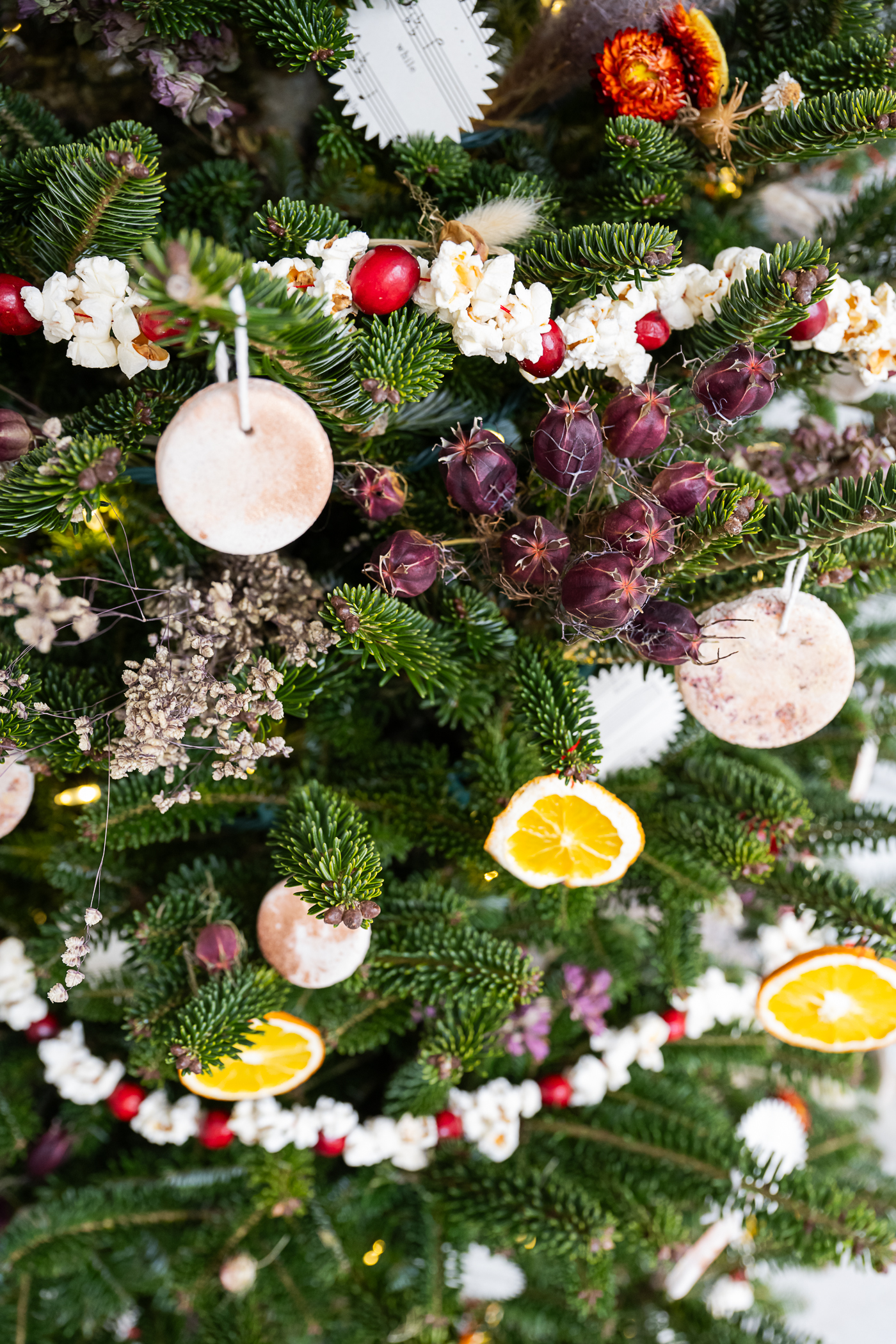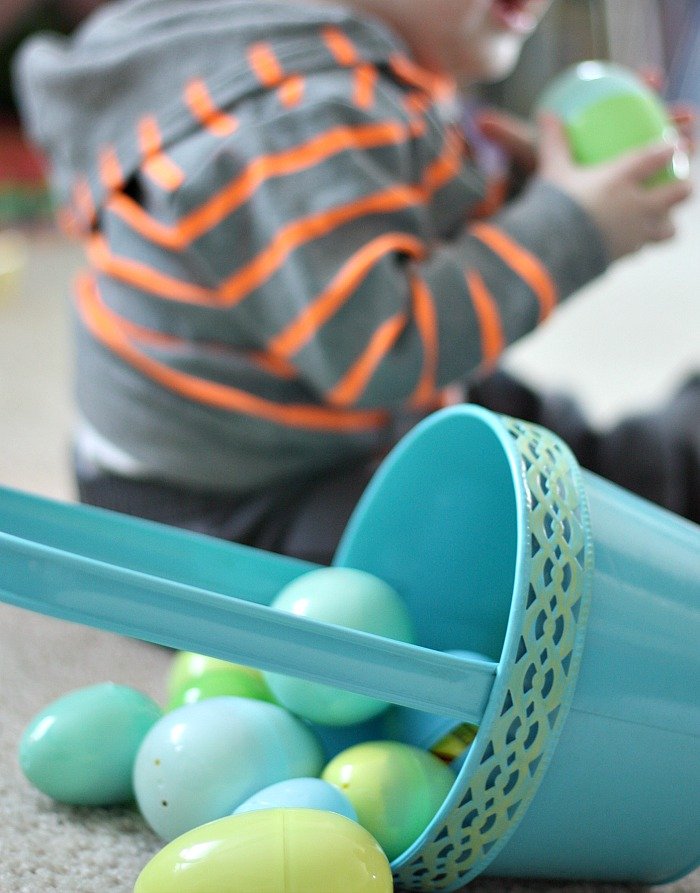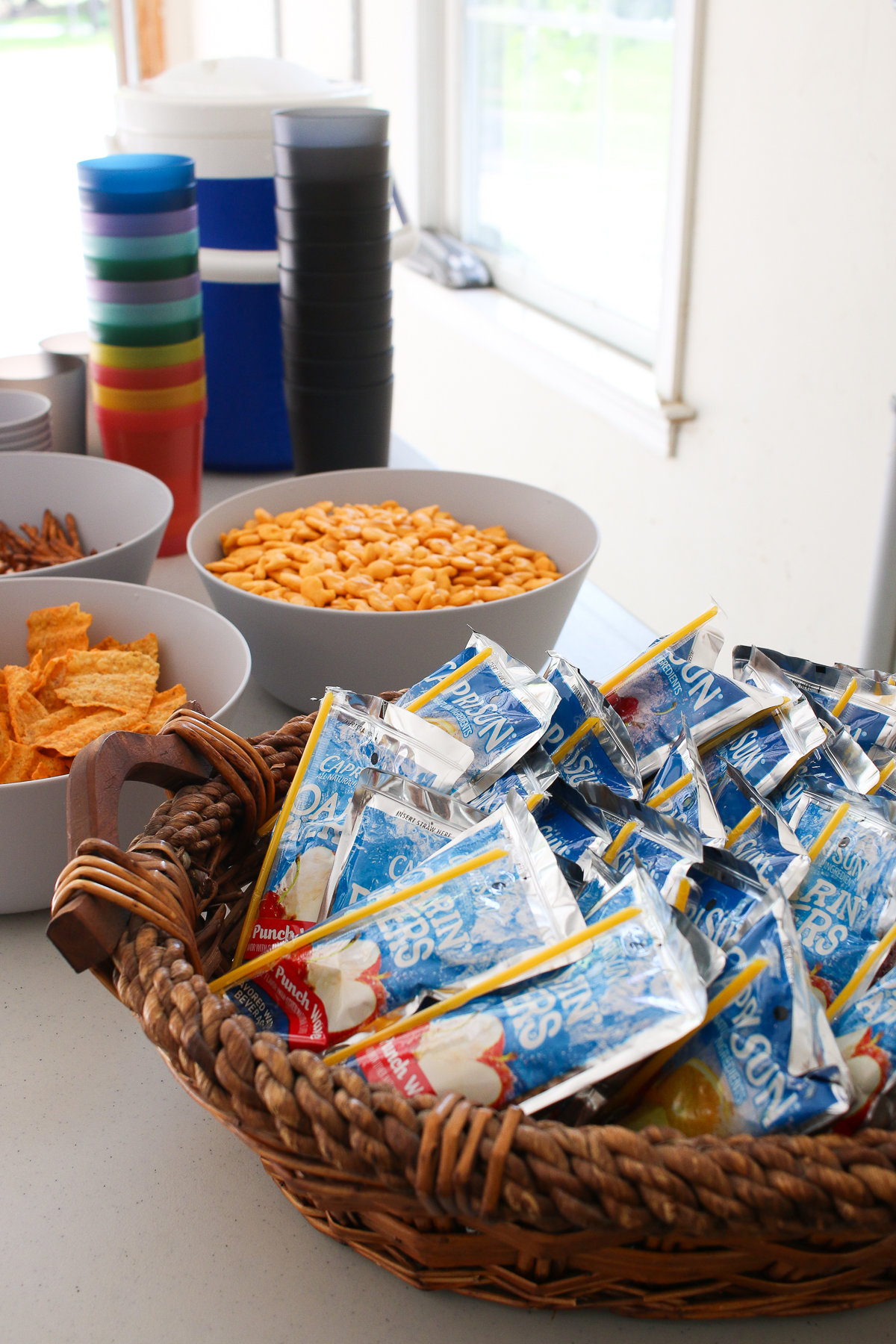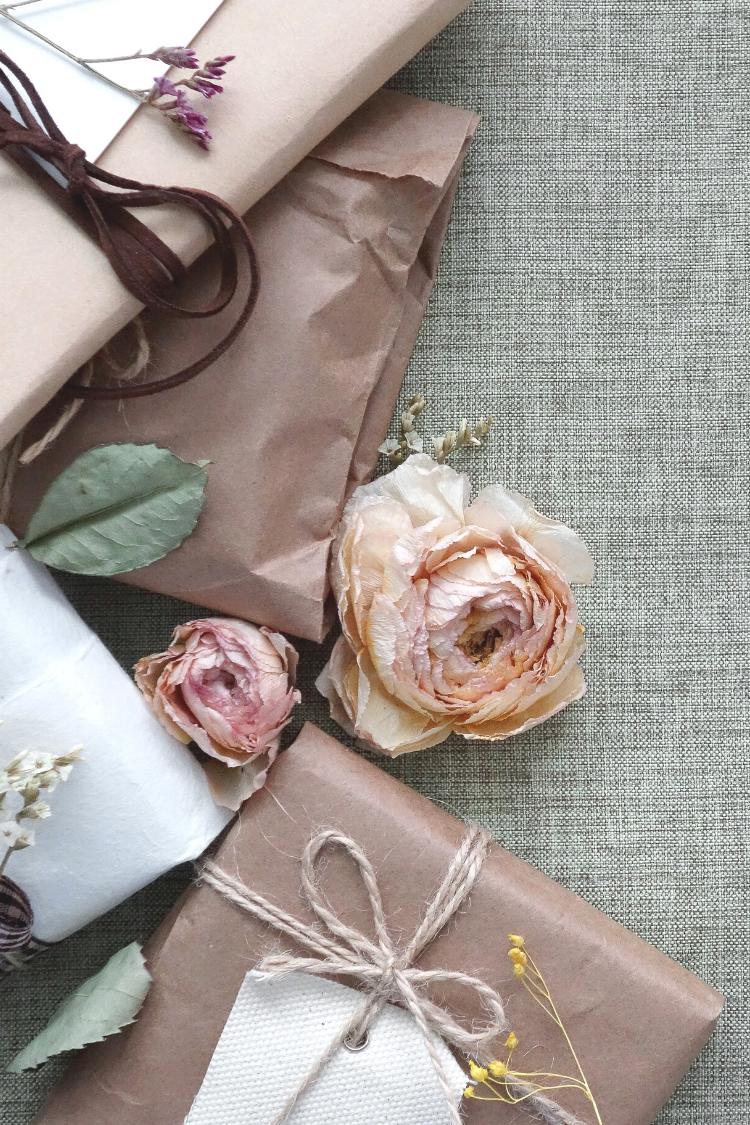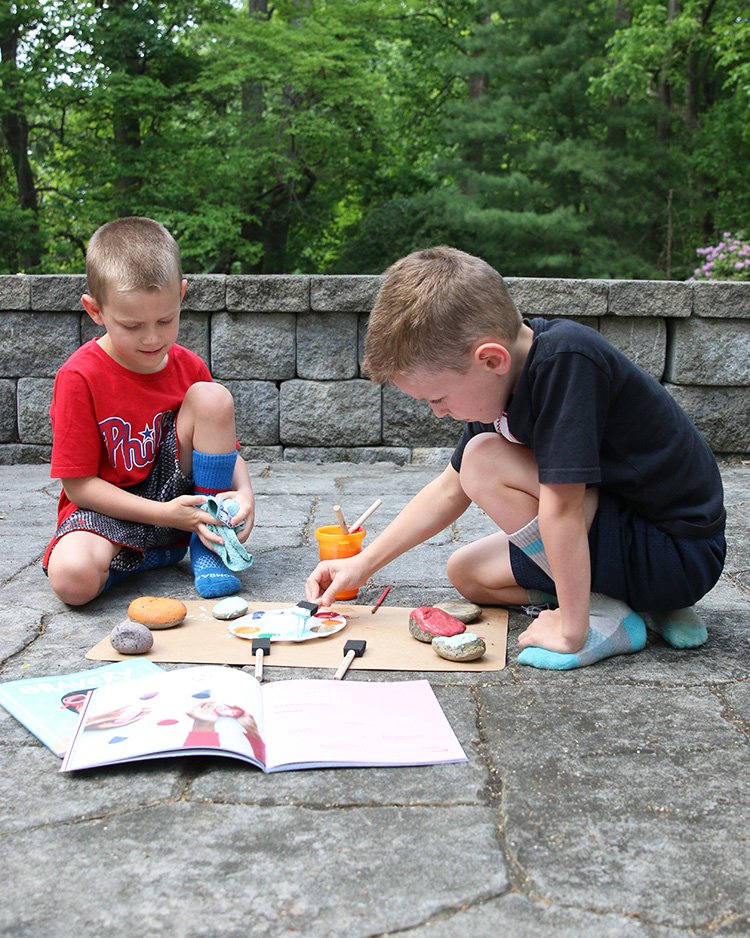Tips for Sustainable Gifting For Family and Friends
Whether it’s birthdays, holidays, or just a gift for fun, we spend a lot of time and money passing along gifts to family and friends. How can we make this fun and fulfilling practice more sustainable? Read on for tips and thoughts on normalizing sustainable gifting for family and friends.

Phew! So far this year we’ve covered the bathroom, the bedroom, the kitchen, the garden, the laundry/utility room, and school shopping. Wowsers! We’ve covered a lot, but room by room and broken down bit by bit, hopefully, you’re finding it manageable and forming some low-waste habits in your household.
Any rooms you’ve found easier than others? Favourite new habit you’ve formed? Do let me know, I’d love to hear about it.
With the summer coming to a close and most of the house covered, we thought it might be useful to turn to gifts and presents. It’s too early to mention the ‘C’ word but with it being only a few months away for those super organised amongst you, it’s probably starting to enter your mind.
I started off by thinking I could cover presents AND throwing a zero-waste party, but there’s just so much that we’ve broken it down into two parts. We’ll start with presents and then come back in a couple of weeks for the next part in the series to look at hosting a zero-waste party.
Getting used to buying preloved gifts for kids
First off, I have a confession. From the birth of my eldest (she’s now 11!), I have been a bit of an NCT sale addict! In the UK, the NCT (National Childbirth Trust) runs antenatal classes you can sign up for when you’re pregnant. Then, as members, you get early access to their consignment sales, which typically happen twice a year. A room full of preloved clothes, equipment, books, and toys at discount prices was my idea of heaven.
My husband quickly got the bug too, and before I knew it we had almost every secondhand set of Happyland available (for US readers, think the toddler version of Playmobil). We saved the majority of these purchases for Christmas presents. From birth to toddler stage, she didn’t notice that gifts from Father Christmas (Santa in the US) didn’t have packaging or were sometimes a little battered around the edges.
As she grew up and both she and my younger son outgrew the NCT age range, (and we moved to the US), we turned to seasonal consignment sales and to charity or thrift stores. Where we lived in Massachusetts, there was also “the boutique”, an area at the town dump where people could put things that they no longer needed but that were too good for landfill. I’m not ashamed to admit that more than a few of their presents came from there over the years.
Preloved sales, be they through an organised charity, a private company running a consignment event, an app like Vinted or ThredUp, or a yard/car boot sale, can save you A LOT of money if you have kids. Presents that would have cost us £30-£40 new cost us £5-£10 instead. Either twice as many presents or a third as much money spent on gifts – it adds up fast!
The temptation for me initially was to buy twice as much, but as I learn more and more about overconsumption (new or preloved), I have been trying to reign myself in and spend half as much on a smaller number of things instead.
With the firstborn, the desire to buy everything new can be strong, but as soon as they’ve worn something once and exploded from either (or both) ends, I found I couldn’t tell the difference between my secondhand purchases and those that the grandparents had bought brand new.
In fact, I’ve had three conversations recently with mums I know. They use Vinted a lot to source their own clothes as well as their kids because it’s so much better than buying from fast fashion stores like Primark or H&M (we touched on the environmental cost of fast fashion in our April blog: 15+ Easy Sustainable Style Tips for Beginners – Honestly Modern). If you’re looking for clothes as a gift, why not check a preloved site or app first before hitting the shops?
Sustainable gifting for family – your own kids
Let’s start with your own child’s gift list. There is also a lot of research now showing that better quality play comes from fewer toys around children. Less is more, quite literally. And we have a lot of control over what comes into our homes via our own purchases.
Stick to the sustainable values and guidelines you’ve set for yourself regardless of what others might think. Choose secondhand gifts from places like I mentioned above: charity shops, consignment sales, vintage boutiques, online resale outlets, and more.
Remember sustainability and low-impact living is a journey, and an adventure outside of the status quo for many of our communities, so be patient and do your best to incorporate more sustainable gifts when you can. Start with your own purchases and gifts and don’t try to control what others buy for you and your family.

Sustainable gifting from family and close friends
Bucking the trend for gifting in our own homes and choosing secondhand options can be challenging because it’s not “the norm”, but it’s still doable. However, what about giving gifts to those outside our home or receiving gifts from family and friends? How do we tackle sustainability in a space where so many find great joy in giving the latest and greatest flashy toys and fancy tech?
Aren’t secondhand presents the unforgivable faux pas for parties? Can you really give or ask to receive secondhand, and if so, what’s the best way to do it?
There can be some pushback from people (or just in your own head) around secondhand gifts. Personally, I really struggle to encourage family members to buy secondhand gifts for me or my kids as their instinct is that everything has to be new. Buying secondhand feels wrong to them, so it’s going to take some time to normalise it and explain why I prefer secondhand gifts for my family.
Many of us know a grandparent or two who insists on the recipient having something to unwrap on the big day out of fear the child will think they’re being spurned. We have distant relatives who insist on buying something, anything, so they’re not forgotten. I really struggle with this, and to be honest, it has caused a lot of heated arguments. Trying to show that you’re not rejecting the person when you reject the idea of a gift from them (there’s no other way of putting it) is tricky.
So what do we do? We’ve definitely not got it figured out yet, so we’re going with perfectly imperfect for now! From our family or friends, we ask for a lot of experiences (money towards football match tickets, theatre tickets, swimming/gymnastic/extracurricular lessons, 1-to-1 coaching sessions of their favourite sport, theme park tickets, etc).
Some relatives will no doubt feel like this is just asking for cash, as we tend to get the tickets and they pay us back. But we try to show these experience gifts mean more than physical gifts by sending thank you videos and photos when we use the tickets or do the experience. They then get the joy of giving long after it’s given and helps form a new habit and tradition
So far I think it’s working (all be it with a few disagreements) but check back in a few years and we’ll see how we’re getting on! With family, all you can do is your best. Give them a list of the things kids want or the link on Vinted/eBay to buy that coveted women’s football shirt themselves. Take deep breaths and embrace imperfection.
When it comes to giving used gifts to people I look for new/nearly new. It’s easy to search these days on Vinted, ThredUp, or eBay by condition. If I’m in a charity shop, I make sure they look as good as new if it’s going to be a gift. We tend to give gift cards to parents or siblings, and I have been known to buy my brother a taxi ride from the airport as a birthday gift in the past!
Failing these types of options, which I know are specifically useful for the gift recipient, I look for similar gifts to those mentioned in the next section – experiences, magazine subscriptions, memberships, etc. It’s consumption but in a way that uses fewer resources (production, shipping, etc…) and will last a lot longer.
Sustainable Gifting from Birthday Party Guests
If you’re hosting a birthday party – you know the ones where you invite the whole class and suddenly your child has 20-30 £10/$10 gifts – encouraging sustainable gifting can be especially hard. All those fun but cheap toys they receive are exciting and lovely for the 30 minutes they spend opening them. But a week later, the toys are still in their original packing or forgotten about in a cupboard somewhere. More clutter, more waste.
So how do you keep the number of toys to a minimum in your house with a birthday party just around the corner? Do we cross our fingers and hope the “please don’t get a present” on the invite will finally work? Here are a few suggestions:
Try a fiver party
One of the best invites I ever saw came from my son’s friend when he was around 4 or 5. He was invited to a Fiver Party. I love this concept! It’s really simple. The birthday child picks one big (ish) present and everyone brings along $5/£5 so the child can save it all up and buy just what they want. It could be anything from a keyboard to a zoo membership or science kit subscription set.
Here’s some suggested wording for the invite:
“Additionally, your presence is the only present that we need, but should you want to give something, x is saving up for yyyy and a $5 contribution would be really gratefully received”
Or:
“Xx is having a fiver party! He would really love a yyyy, so please consider bringing $5 to put towards this gift instead. XXXX can’t wait to celebrate with their friends!”
Whatever wording you use, make sure you’re consistent. If you get messages from parents after the initial invite has gone out, asking for gift ideas, repeat this request. As soon as you start suggesting small little gifts, then it’ll all fall apart.

Normalising secondhand starts with you.
If the idea of no presents at a birthday party is a no-go for your household, how about asking for preloved gifts? For example, this year for our son’s birthday party, when parents asked about gift ideas, I replied with:
“Toby doesn’t really need anything. If you really want to get him a gift, if there is a book on your bookcase that your child has finished reading and that they think Toby would like, that would make the perfect gift. Thank you.”
He ended up with some great books and a handful of parents told me they had great fun picking them out from their bookcase with their own child as they thought about who my son was and what he was interested in. When we told Toby his friends had specifically picked these books because they thought he’d like them, he was thrilled at their thoughtfulness. Thoughtful, free, low impact = perfect!
We have used similar strategies to find great gifts for friends when we’ve gone to parties as guests. We tend to look for books that are in very, very good condition. I stand by the rule you can never have too many books, although we’re testing that big time in our house!
Most recently, my daughter and I found a brand new, unopened bath bomb pack at a local charity shop. Her friend’s party was coming up, so we snagged that for just a few pounds and it looked like it came new from a store. She would never know (or care)!
If you’ve got an unopened present in a cupboard that you think the birthday child would enjoy, then why not re-gift it? Kids don’t (usually) mind if something is new or used, so give it a try and you might be surprised.
Finally, if you can’t bring yourself to pass along a favorite book or purchase something like-new from a secondhand shop, try giving gift cards to their favourite ice cream place, activity, or magazine subscription. These aren’t always perfectly zero waste (we’re striving for perfectly imperfect remember), but they will last a lot longer than a random toy and they’ll likely enjoy it much more when they get around to using it.
I have used the National Geographic Kids subscription (usually available on a deal so it’s around $20) for many presents when I can’t find the right kind of secondhand gift (or I can’t find anything in time). The gift lasts a year and means they get something in little doses all year long. It’s less overwhelming and offers more memories.
Note: Buying secondhand takes time and patience. I collated all my secondhand apps in one folder on my phone so I don’t have to keep searching for them all the time. For special items for birthdays or Christmas, I set up numerous search alerts on secondhand shopping apps so I get notifications. Then I can grab the bargain before it’s too late. Start early! Last minute or impromptu is the enemy of zero waste.
Quick word on why secondhand is important
In a 2022 article for Wealthify, Opinium Research estimated that £733 million is spent in the UK each year on unwanted presents for Christmas. £733 million! That number is huge. Socks, clothes that don’t fit, bath sets, perfume, and the list goes on. So many gifts are bought just to have something to unwrap (not to mention all that wasted wrapping paper). Just imagine all of those gifts piled up together! Imagine what that extra money would mean for so many households.
I love shopping (despite what my husband and kids think). Carrying shopping bags down the high street or through the shopping mall and coming home with new stuff is built in our psyche from an early age as a hobby and a status symbol. I spent my teenage years going “to town” every Saturday to buy stuff with my friends. It meant freedom and growing up. Those habits are hard to break.
The planet though cannot cope with our constant need for consumption. The cost of an item goes beyond the value of the product itself. Each item we purchase carries a carbon footprint from the factory, the shipping container, the distribution centre, and the delivery van. Workers endure meager conditions for very little pay to feed our consumption craze. It all adds up and the effects last for years. Buying less, and buying less used is crucial if we are to fight climate change and curb the impacts we are already feeling all around the world like record heat, scorching wildfires, and severe flooding.
On a related note, if you would like an eco book recommendation then check out “The Day the World Stops Shopping” (check your local library or library app for audiobooks). The economy will not collapse beyond repair if we stop shopping. The planet, on the other hand, will be uninhabitable for future generations if we don’t.
If you like sustainable gifting for family and friends, you might also like
20 Low-Waste Birthday Snacks for School, Teams, & Clubs
70+ Creative Sustainable Birthday Party Themes for Kids
8 Important Reasons To Buy Gifts Secondhand
About The Author

Sarah Burgess
Sarah Burgess is co-founder of the social movement Just1bag2020, mother of two, and British Expat who spent four years living in the United States and recently moved back to the United Kingdom. Sarah spends her time promoting local sustainable change through small, easy-to-do actions that everyone can do to help out the planet. When not picking up trash and persuading others to do the same, Sarah and her family can be found travelling the world and experiencing everything this precious Earth has to offer.

